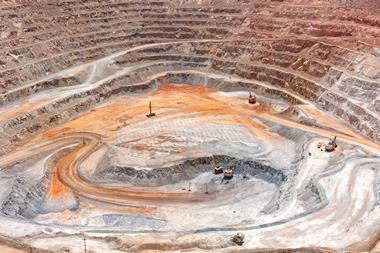2020 is a landmark year for climate change action. Speaking at the virtual Airmic Fest conference, Matt Scott, senior director, Climate and Resilience Hub at Willis Towers Watson at Willis said that data shows that unless we have a significant reduction in greenhouse gas emissions starting today, “we may well be facing irreversible warming and pervasive changes.”
Wednesday 23 September 2020
11:30: Session: Responding to climate change – the strategic role for the risk professional
For risk managers, the financial risks associated with global warming could be significant. Broadly speaking there are three ways in which these financial risks manifest:
1) Physical risk
The risk arising from weather related events (acute) and slow onset climatic change such as rising temperatures (chronic). The financial risk here arises both from the hazards themselves and from possible changes to those hazards in the future.
2) Transition risks
Those risks arising from the transition to a low, lower or net zero carbon economy. These risks arise financially from the responses companies must take to changes in policy, technology and consumer preference.
3) Liability and litigation risk
The risk of actions initiated by claimants who suffered loss or damage arising from climate change. The financial risk to companies arising here from the cost of litigation and the cost of liability.
While the ways in which financial effects can arise is well documented, it’s difficult to predict how those changes will manifest.
The problems with modelling physical risks
For instance, when looking at physical risk, you need to understand the impact that global warming could have on extreme weather events, rather than climate change itself. While there have been significant advances in research in this area, there is still a great deal of uncertainty.
Indeed, there are some perils such as global tropical cyclones, where the incidences and severity of the weather events could actually decrease as the earth warms. For some perils, incidence rates and severity may increase in some regions but decrease in others. Even with flooding, while lots of regions can expect more floods, there are some areas where the models show a decrease in flooding such as in Central and Eastern Europe.
Tom Philp, senior manager – science at AXA XL, said: “Climate change up to the present day for us as an industry is usually accounted for in vendor cat models… The reality though is that as we move towards unfamiliar climate states, our uncertainty about weather perils grows, and although uncertainty is increasing the actual weather hazard may not be.
“However, for those communities that struggle with natural peril resilience in the present day are going to be presented with severe challenges as to how to manage that uncertainty… Quite how a weather-peril-exposed re/insurance portfolio will respond to future climate change I would argue is largely beyond the scope of reliable science.
“Therefore, understanding and preparing for the full scope of futures as opposed to a single best estimate is the most effective method to being at the “head of the pack”.
The rise of litigation and liability risks
Today there are over 1500 live cases around the world related to climate change of which over a thousand are filed in the US, but there are other hotspots such as Germany and Australia. On top of that, there’s very little legal precedent on the topic of climate change meaning that cases are often escalated through cycles of appeal up to Supreme Court.
Katie Lennon, UK business manager at AXA XL, said: “This means that risk managers need to watch the outcomes of these cases really closely because one ruling could affect hundreds of other live cases that could also trigger a number of other copycat cases.”
Three areas of particular interest are:
- · Product liability
- · Misrepresentation and fraud
- · Greenwashing and advertising liability
- · Negligence
Transition risk
Following the Paris agreement, the UK government committed to achieving net zero emissions by 2050, as did many other countries across the globe. With just 30 years to go until the deadline, it’s clear that the pace of change needs to increase rapidly and that many businesses will be accelerating the changes they are making.
On top of the Net-Zero policy, it is likely that governments will introduce further policies to help support that target. As such, risk managers need to think through the potential cost implications of making changes as well as whether it is likely to be covered by insurance.
Consumer preferences will also have a substantial impact on organisational risk. Lennon explains: “The growing concept of flight shame in Sweden actually saw a 5% decrease in the number of passengers in 2019 as people were choosing less carbon intense methods of travel. Equally, the rise of energy efficient and low carbon technology has a huge role to play in the transition and many firms merely need to ask themselves how and when they can make such a change.”
“The transition to a low, lower, or net-zero carbon economy will give rise to huge opportunity and the winners are likely to be those that seek out the opportunities in the transition rather than waiting for it to happen to them - which could be quite an expensive strategy.”
In partnership with






















No comments yet